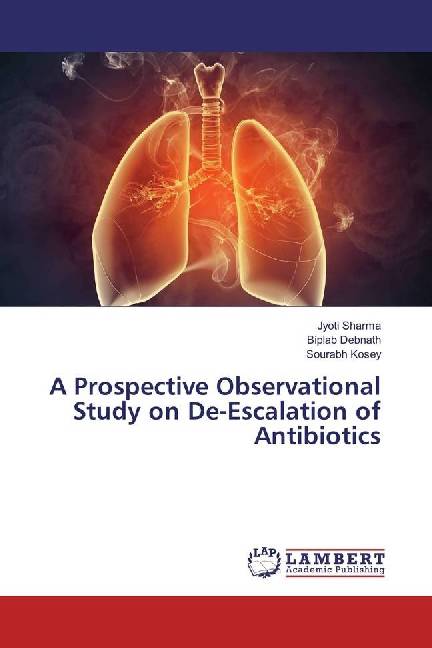
- Afhalen na 1 uur in een winkel met voorraad
- Gratis thuislevering in België vanaf € 30
- Ruim aanbod met 7 miljoen producten
- Afhalen na 1 uur in een winkel met voorraad
- Gratis thuislevering in België vanaf € 30
- Ruim aanbod met 7 miljoen producten
Zoeken
A Prospective Observational Study on De-Escalation of Antibiotics
Jyoti Sharma, Biplab Debnath, Sourabh Kosey
Paperback | Engels
€ 35,45
+ 70 punten
Omschrijving
The increasing emergence of antimicrobial resistance in the intensive therapy unit (ITU) threatens patient outcomes and substantially raises overall healthcare costs. Over the past several decades, the frequency of antimicrobial resistance and its association with serious infectious diseases have increased at alarming rates. The increasing resistance rate among nosocomial pathogens is particularly disconcerting. Powerful antibiotics first became commercially available in the 1940s and have saved untold millions of lives. But after years of widespread use, evolution of disease-causing microbes has resulted in many antimicrobials losing their effectiveness. As microbes evolve, they adapt to their environment. If something stops them from growing and spreading such as an antimicrobial they evolve new mechanisms to resist the antimicrobials by changing their genetic structure. Changing the genetic structure ensures that the offspring of the resistant microbes are also resistant.
Specificaties
Betrokkenen
- Auteur(s):
- Uitgeverij:
Inhoud
- Aantal bladzijden:
- 80
- Taal:
- Engels
Eigenschappen
- Productcode (EAN):
- 9783659920684
- Uitvoering:
- Paperback
- Afmetingen:
- 150 mm x 220 mm

Alleen bij Standaard Boekhandel
+ 70 punten op je klantenkaart van Standaard Boekhandel
Beoordelingen
We publiceren alleen reviews die voldoen aan de voorwaarden voor reviews. Bekijk onze voorwaarden voor reviews.











